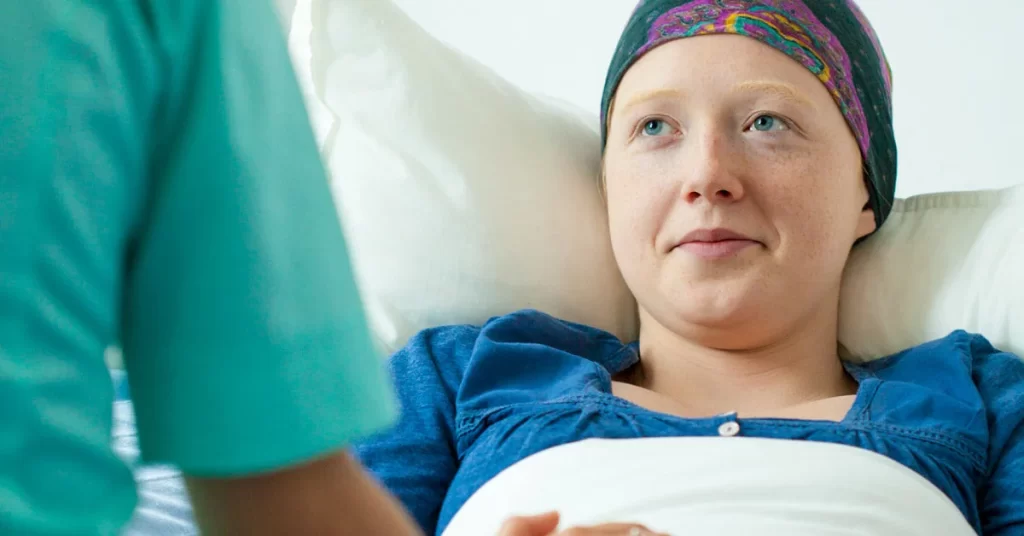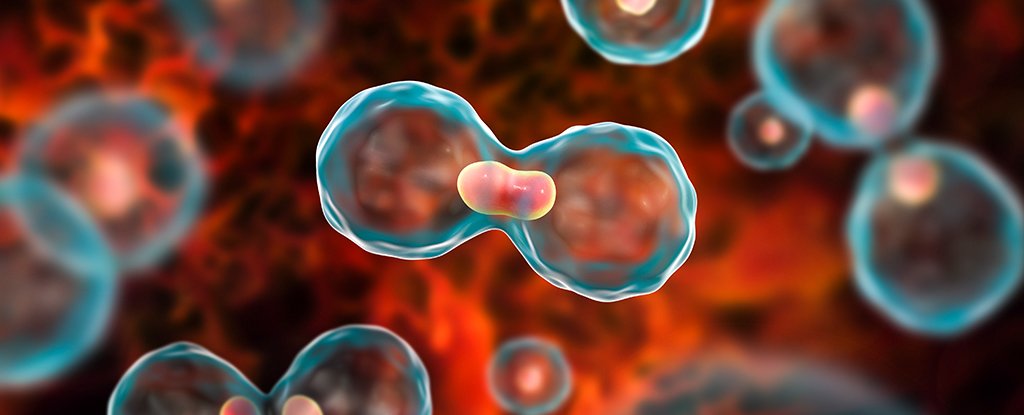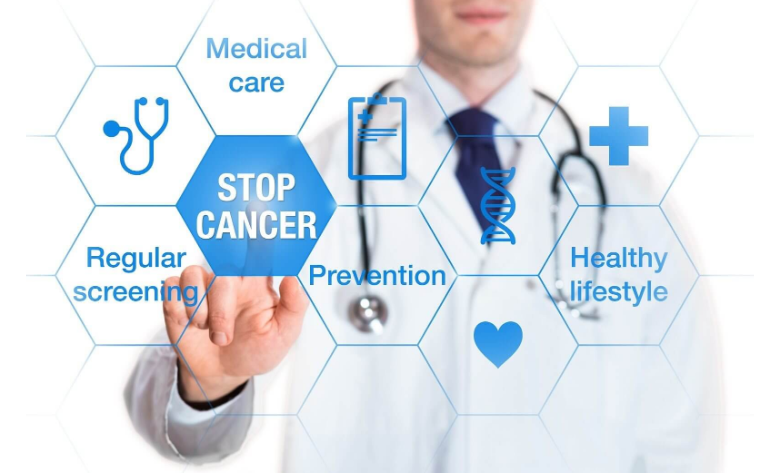Medical updates: Cancer appears to affect every one of us sooner or later. Therefore, February 4 is an important day to spread awareness of the prevention, detection, and treatment of cancer. Activities for World Cancer Day, which were first held by the Union for International Cancer Control in 2008, aim to drastically lower cancer-related disease and fatalities by 2020.

What is Cancer?
Cancer is a disease where a few of the body’s cells grow out of control and spread to other bodily regions.
Cancer may develop practically anywhere in the millions of cells that make up the human body. Human cells often divide (via a process known as cell growth and multiplication) to create new cells when the body requires them. New cells replace old ones when they die as a result of aging or damage.
Sometimes, this systematic process fails, causing damaged or abnormal cells to proliferate when they shouldn’t. Tumors, which are tissue masses, can develop from these cells. Tumors may or may not be cancerous (benign).
Cancerous tumors can spread to distant parts of the body to form new tumors, invade adjacent tissues, or both (a process called metastasis). Malignant tumors are another name for cancerous tumors. Malignancies of the blood, including leukemias, rarely become solid tumors although many other cancers do.
Noncancerous tumors do not penetrate or spread to neighboring tissues. Benign tumors often don’t come back after removal, however malignant ones can. However, benign tumors can occasionally grow to be extremely enormous. Some, like benign brain tumors, can have grave side effects or even be fatal.
<script async src="https://pagead2.googlesyndication.com/pagead/js/adsbygoogle.js?client=ca-pub-6868145806024060"
crossorigin="anonymous"></script>What causes cancer?

Cancer can arise from a variety of different factors. According to scientists, the combination of several factors results in cancer. The contributing factors may be a person’s constitutional traits, environmental influences, or genetics.
Cancers in children are treated differently from cancers in adults in terms of diagnosis, prognosis, and therapy. The likelihood of survival and the origin of the malignancy are the primary variations. While adult malignancies have a survival rate of 68%, juvenile cancers have an overall five-year survival rate of roughly 80%. This difference is believed to exist because pediatric cancer responds better to treatment and children may withstand the more rigorous treatment.
Also read:https://medicalupdates.in/worlds-most-expensive-drug-worth-28-58-crores-approved-for-hemophilia/
Stem cells, which are simple cells capable of creating several kinds of specialized cells that the body requires, frequently cause or start childhood malignancies. Typically, juvenile cancer is brought on by a sporadic (happens by chance) cell alteration or mutation. The sort of cell that develops into cancer in adulthood is often an epithelial cell. Body cavities and the outside of the body are lined by epithelial cells. Environmental exposure to these cells over time can result in cancer. For this reason, adult malignancies are occasionally referred to as acquired.
Risk Factors
As previously indicated, several malignancies, especially in adults, have been linked to frequent exposures or risk factors. Anything that might raise a person’s risk of contracting an illness is a risk factor. Although a risk factor doesn’t always lead to the disease, it might weaken the body’s defenses. According to theories, the following risk factors and mechanisms might cause cancer:
- Environmental factors The chance of acquiring cancer is influenced by several environmental variables. Smoking tobacco increases the chance of getting malignancies of the lungs, mouth, throat, esophagus, kidneys, and bladder by a significant amount. The risk of cancer can be increased by pollutants in the air or water, such as asbestos, industrial waste, or cigarette smoke. Several substances are known to cause cancer, and numerous others are thought to do so. For instance, exposure to asbestos may result in lung cancer and mesothelioma (cancer of the pleura). There is a link between pesticide exposure and an increased risk of some cancers (for example, leukemia and non-Hodgkin lymphoma). The interval between chemical exposure and the onset of cancer may be rather long. Radiation exposure increases the chance of developing cancer. Skin cancer is brought on by prolonged exposure to UV radiation, mostly from sunlight. Ionizing radiation causes cancer. Ionizing radiation is used in X-rays, including computed tomography [CT], and having several scans can slightly raise your chance of developing cancer (see also risks of radiation in medical imaging). Lung cancer risk is increased by exposure to the radioactive gas radon, which is emitted from soil. Normally, radon quickly spreads into the atmosphere and has no negative effects. However, when a structure is built on soil with a high radon concentration, radon can build up inside the structure and can result in airborne levels that are dangerously high. When radon is inhaled, it enters the lungs and may eventually lead to lung cancer. Smokers who are exposed also have a higher chance of developing lung cancer. More research is required to pinpoint the chemicals that raise the risk of cancer despite the fact that many other compounds have been looked at as potential cancer causes.
- Age Wilms tumor, retinoblastoma, and neuroblastoma are a few diseases that nearly exclusively affect children. These tumors are caused by suppressor gene mutations that either originate during fetal development or are inherited. The majority of other malignancies, especially in older persons, are more prevalent in adults. In the US, adults over 65 account for more than 60% of cancer cases. A combination of increased and longer exposure to toxins and a weakened immune system is likely to blame for the rising cancer rate.
- Diet Food factors can raise the chance of developing cancer. For example, obesity alone and diets high in unsaturated fat have been related to a higher risk of colon, breast, and possibly prostate cancer. Large alcohol use greatly increases the risk of esophageal, head and neck, and liver cancer in individuals. The risk of stomach cancer is increased by a diet heavy in smoked, pickled, and grilled foods. Obesity and overweight people are more likely to develop cancers of the breast, endometrial, colon, kidneys, and esophagus.
- Medications and medical treatments The chance of acquiring cancer may be raised by specific prescription drugs and medical procedures. For instance, women who are presently using oral contraceptives or have used them within the last few years may see a modest increase in their risk of breast cancer. Breast cancer risk is also slightly raised when estrogen and progestin are administered to women as part of hormone treatment during menopause. Women who used the drug, as well as their daughters who were exposed to it before birth, had an increased chance of developing breast cancer. Also read:https://medicalupdates.in/cervical-cancer-awareness-month-how-to-prevent-it-risk-factors-and-importance-of-screening/ DES also raises the risk of cervical and vaginal cancer in daughters of DES users. Tamoxifen, a breast cancer treatment, raises the risk of endometrial cancer (cancer of the inner lining of the uterus). The risk of liver cancer may be modestly increased by long-term usage of testosterone, danazol, or other androgens. The chance of acquiring a second cancer years after using certain chemotherapy drugs (also known as “alkylating agents”) and radiation therapy may rise.
- Infections Many viruses are suspected of causing cancer in humans, and certain viruses are known to cause people to develop cancer. In addition to causing genital warts, the human papillomavirus (HPV) is a key factor in both men’s and women’s anal and penile cancer as well as cervical and vulvar cancer in both sexes. Some throat and mouth cancers are also brought on by HPV. The hepatitis B or C virus can result in liver cancer. HIV and other human retroviruses can cause lymphomas and other blood system malignancies. In certain nations, particular viruses cause specific cancers, but not in others. For instance, the Epstein-Barr virus causes nose and throat malignancies in Asia and Burkitt lymphoma (a form of cancer) in Africa. Some bacteria may also cause cancer. Stomach ulcer-causing Helicobacter pylori has also been linked to stomach cancer and lymphomas. Some parasites have been linked to cancer. Chronic bladder inflammation and scarring brought on by Schistosoma haematobium infection can result in cancer. The parasite Clonorchis sinensis has also been connected to the bile duct and pancreatic cancer. Also read this:https://medicalupdates.in/10-foods-that-can-help-you-look-younger/
- Inflammatory disorders Cancer risk is rate increased by autoimmune disorders. These conditions include Crohn’s disease and ulcerative colitis (which can result in colon cancer and bile duct cancers).
- Genes and chromosomes The risk of cancer may rise with the presence of an additional or defective chromosome. For instance, individuals with the most prevalent form of Down syndrome, who have three copies of chromosome 21 rather than the typical two, have a 12–20 times higher chance of having acute leukemia but, paradoxically, a decreased risk of developing carcinomas. It is thought that abnormalities (mutations) affecting important genes have a role in the development of cancer. These genes generate proteins that modify cell division, control growth, and other fundamental cell characteristics. The harmful effects of chemicals, sunshine, drugs, viruses, or other environmental pollutants can result in gene changes that cause cancer. These faulty cancer-causing genes are inherited in certain families.
- Family history Certain malignancies are much more likely to be developed in some families. A single gene can cause an elevated risk in certain cases, while other times it’s a combination of genes working together. Family-wide environmental influences may change this genetic connection and result in cancer.
How to Prevent Cancer or Find It Early?

Making healthy decisions will reduce your chance of developing several common cancers. Some cancers can be detected early by screening tests, when therapy is most effective. Vaccines (shots) can aid in the prevention of many cancers. Find out more about reducing your chance of developing cancer.
Screening tests
Regular screenings may detect colorectal (colon), breast, and cervical cancers early, when treatment is most likely to be effective. For certain patients at high risk, lung cancer screening is advised.
Vaccines
Vaccines (shots) aid in reducing the risk of cancer. The human papillomavirus (HPV) vaccination aids in the prevention of many malignancies, including most cervical cancers. The hepatitis B vaccination can reduce the chance of developing liver cancer.
Healthy choices
Making healthy decisions like maintaining a healthy weight, abstaining from cigarette use, consuming alcohol in moderation, and taking care of your skin can lower your chance of developing cancer.
Cancer Treatment
Depending on the type and stage of cancer, there may be a variety of therapy choices.
Localized treatment – In most cases, localized treatment involves using techniques like surgery or local radiation therapy to a particular body part or tumor.
Systemic treatment – Chemotherapy, targeted therapy, and immunotherapy are examples of systemic pharmacological therapies that can have an impact on the entire body.
Palliative treatment – Palliative care focuses on treating cancer-related medical symptoms such pain and breathing difficulties.
Is Cancer Contagious?
Cancer is NOT contagious
Cancer is not something you can “catch” from someone else. Cancer cannot be transferred by close contact, including intimate acts like kissing, touching, dining together, or inhaling the same air. Cancer cells from one cancer patient cannot survive in the body of another cancer patient who is healthy. Cancer cells from another person are among the foreign cells that the immune system detects and eliminates.
People with cancer need to be around other people
Even today, loved ones with cancer may encounter resistance from their family, friends, and coworkers. The cancer patient may feel alone and lonely as a result of this. However, they cannot “transfer” cancer to you. Reach out to the cancer patient without fear. They require your support and visits.
<script async src="https://pagead2.googlesyndication.com/pagead/js/adsbygoogle.js?client=ca-pub-6868145806024060"
crossorigin="anonymous"></script>
